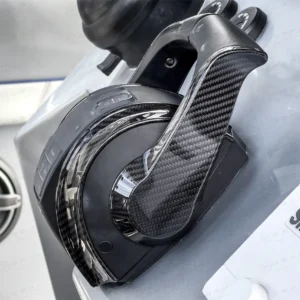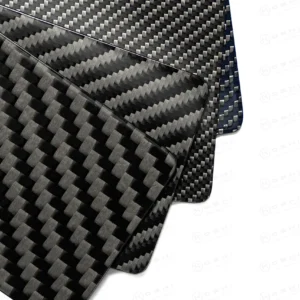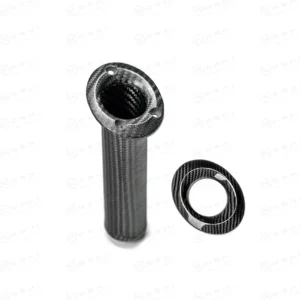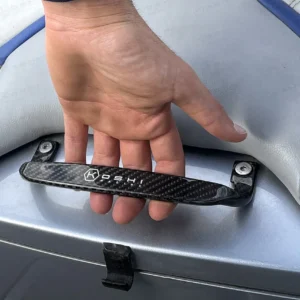Carbon Fiber: The Material Of The Future In Today’s Industries

Imagine a world where materials are not only stronger and lighter, but also more sustainable and versatile. This is the promise of fiber composite, a revolutionary material that is transforming various industries, from aerospace to automotive, and even the marine sector. But what makes carbon fiber so special, and why is it considered the material of the future? In this blog post, we will explore the properties, applications, and future potential of carbon fiber, with a particular focus on its impact on the marine industry.
What Is Carbon Fiber Composite?
Carbon fiber is a material composed of thin, strong crystalline filaments of carbon that are used to strengthen other materials. It is produced through a complex process that involves the oxidation, carbonization, and graphitization of precursor fibers, usually polyacrylonitrile (PAN). The result is a material that is incredibly strong yet lightweight, with a high resistance to temperature and corrosion.
How is Carbon Fiber Manufactured?
The journey begins with a precursor, typically polyacrylonitrile (PAN), which undergoes a series of heat treatments. First, the precursor is stabilized in air at moderate temperatures, then carbonized at extremely high temperatures in an oxygen-free environment. This carbonization process aligns carbon crystals along the fiber axis, creating the signature strength of carbon fiber.
The resulting fibers then undergo surface treatment to enhance their bonding properties, followed by a protective coating process called sizing. Throughout manufacturing, precise control of temperature, pressure, and other variables is crucial to achieve the desired properties.

Who Discovered Carbon Fibre?
Carbon fiber has a long history of development, but the discovery of high-performance carbon fibers is generally attributed to physicist Roger Bacon in 1958. While working at Union Carbide’s Parma Technical Center (now GrafTech International), Bacon produced the first high-performance carbon fiber “whiskers” through a process called pyrolysis.
While Bacon’s work in 1958 is considered the breakthrough for high-performance carbon fibers, the subsequent development and commercialization of carbon fiber involved many scientists and engineers. For example:
- Akio Shindo in Japan developed polyacrylonitrile (PAN)-based carbon fibers, which are the most common type used today.
- Leonard Singer discovered pitch-based carbon fibers in the 1970s.
Key Properties Of Carbon Fiber
- Strength of carbon: Carbon fiber is several times stronger than steel and twice as stiff, making it an ideal material for applications that require high strength and durability.
- Lightweight: Despite its strength, carbon fiber is incredibly lightweight, weighing about two-thirds less than steel. This property makes it invaluable in industries where weight reduction is crucial.
- Corrosion Resistance: Carbon fiber is highly resistant to corrosion and chemical damage, which extends the lifespan of products made from it.
- Thermal Stability: Carbon fiber can withstand extreme temperatures, making it suitable for high-temperature applications.
- Versatility: Carbon fiber can be molded into various shapes and sizes, offering design flexibility for manufacturers.

Applications Of Carbon Fiber In The Marine Industry — Hull And Structural Components
One of the most significant applications of carbon fiber in the marine industry is in the construction of hulls and other structural components. Traditional materials like steel and aluminum are being replaced by carbon fiber due to its superior strength-to-weight ratio and corrosion resistance. Boats with carbon fiber hulls are lighter, faster, and more fuel-efficient, making them ideal for both recreational and commercial use.
Recreational boats: In the realm of recreational boating, carbon fiber is used to build lightweight, high-performance boats that offer enhanced speed and maneuverability. These boats are not only faster, but also more fuel-efficient, making them a popular choice among boating enthusiasts.
Boat seats and interiors: At Power Seats Company, we are pioneering the use of carbon fiber in the design and manufacture of boat seats and interiors. Our carbon fiber seats offer unmatched comfort, durability, and sustainability. Here’s how:
Lightweight and comfortable: The lightweight nature of carbon fiber allows us to create boat seats that are easy to install and move. Despite their lightness, these seats do not compromise on comfort, providing excellent support for long hours on the water.
Durability and longevity: Carbon fiber’s resistance to corrosion and wear ensures that our seats remain in excellent condition even after prolonged exposure to saltwater and harsh marine conditions. This durability translates to long-lasting products that offer great value for money.
Sailing yachts: In sailing yachts, carbon fiber masts and booms are becoming increasingly popular. These components are not only lighter but also stiffer, allowing for better sail control and improved sailing performance.
Powerboats: For powerboats, carbon fiber rudders and keels offer enhanced stability and maneuverability. The reduced weight of these components also contributes to better fuel efficiency and faster speeds.
Safety equipment: Safety is paramount in the marine industry, and carbon fiber is playing a crucial role in the development of advanced safety equipment. Lifeboats, life rafts, and personal flotation devices made from carbon fiber offer enhanced durability and performance compared to traditional materials.
Lifeboats and life rafts: Carbon fiber lifeboats and life rafts are lighter and more robust, making them easier to deploy and more reliable in emergency situations. Their resistance to corrosion ensures they remain in good condition, ready for use when needed.
Personal flotation devices: Personal flotation devices made from carbon fiber are not only more durable, but also more comfortable to wear. The lightweight nature of the material ensures that these devices do not hinder movement, making them ideal for both recreational and commercial use.
Carbon fiber is undoubtedly transforming the marine industry, offering unparalleled benefits in terms of strength, weight savings, and durability.
Check out our carbon fiber boat accessories:
-
 Mercury V8 Outboard Cowling Accent Panel KitCall for Price
Mercury V8 Outboard Cowling Accent Panel KitCall for Price -
 Mercury Next Gen DTS Multi-Engine Control Throttle CoverCall for Price
Mercury Next Gen DTS Multi-Engine Control Throttle CoverCall for Price -
 Mercury DTS Dual Handle Electronic Remote Control Throttle CoverCall for Price
Mercury DTS Dual Handle Electronic Remote Control Throttle CoverCall for Price -
 Carbon Fiber Visual Sheets / Plates259.00 € – 635.00 €
Carbon Fiber Visual Sheets / Plates259.00 € – 635.00 € -
 Carbon Fiber Rod HolderCall for Price
Carbon Fiber Rod HolderCall for Price -
 Carbon Fiber Handrail / Grab Handle129.00 € – 189.00 €
Carbon Fiber Handrail / Grab Handle129.00 € – 189.00 € -
 Carbon Fiber Engine Air Scoops for Mercury V8 Outboard, 500R, 450R, 300RCall for Price
Carbon Fiber Engine Air Scoops for Mercury V8 Outboard, 500R, 450R, 300RCall for Price -
 Carbon Fiber Door Handle / Pull Handle119.00 € – 149.00 €
Carbon Fiber Door Handle / Pull Handle119.00 € – 149.00 € -
 Carbon Fiber Cup Holder89.00 €
Carbon Fiber Cup Holder89.00 €













